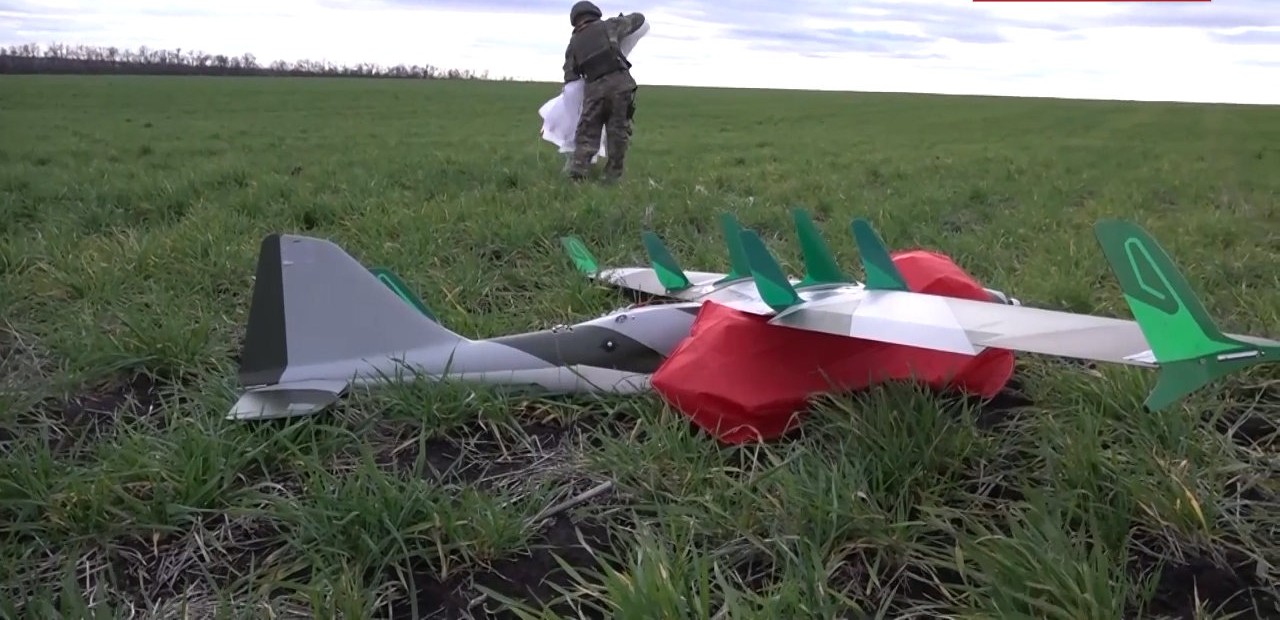Russia appears to have upped its electronic warfare (EW) game by publicizing a hitherto unknown small drone-based system derived from the Orlan-10 in a recent video. Russian defense watchers maintain that the drone has been active in the war zone for quite a while.
Anticipating the war to extend into the winter and possibly next year if diplomacy with the United States (US) or Ukraine fails, this rapidly introduced system could accrue the Russian Army significant tactical battlefield benefits, assuming it has already been produced in large numbers and received by all forward units.
The ‘Moskit,’ ‘Moskito,’ and even ‘Mosquito’ has been reported to be primarily based on the Orlan-10 unmanned aerial vehicle (UAV).
The lightweight drone has been claimed to have successfully jammed Ukrainian communications and is also being introduced to the 300,000 under-training newly mobilized recruits.
The Russian MoD had recently mentioned electronic warfare and electronic engineering as areas to train recruits in, besides radio communications, mechanical repairs, and drone operations.
What The Video Shows
The video shows a pair of soldiers setting up a ground-based launcher and pulling a thick rope meant for the catapult launch system. A brief shot reveals the dish antennae, presumably for controlling the drone and transmitting and receiving data.
The Moskit has a two-blade front propeller and appears highly portable and lightweight.
The soldiers assemble the drone by fastening its fuselage and attaching the other half of each wing. The drone has antennas all over its body, typical of airborne EW platforms. Another shot shows soldiers in a separate command center in radio communication with the drone’s field operators.
One of the drone’s operators is seeing wheeling back the catapult that finally launches the drone. The Moskit then flies overhead and descends vertically by releasing a parachute, landing on inflatable airbags on the side fuselage that have cushioned its fall.
Lightweight & Versatile
The drone has been hailed as a success in the miniaturization of electronic warfare (EW) systems. “Russia’s Moskit drones began to jam the communications of the Armed Forces of Ukraine at the forefront of the Special Military Operation (SMO) and caused absolute chaos and confusion in their operations. Our troops didn’t waste time exploiting that,” said a comment on one page. The claim could not be verified.
The drone has modules to suppress and jam electronic communication and data transmission channels. The UAVs can jam communications up to a range of five kilometers, making it difficult for forward enemy units to interact with their headquarters or command and control centers deployed in the rear.
But more importantly, the Moskit is also equipped with electro-optical systems to perform intelligence-surveillance-reconnaissance (ISR) roles, which the operator can easily switch from its core EW orientation.
It also permits simultaneous EW and ISR tasks, revealing enemy positions and radio emissions sources. “Previously, the Ministry of Defense did not demonstrate the combat work of the Mosquitoes,” the comment on the page said.
The claim is true since no press release or publicity material on the drone from Russia’s MoD, its Krasnaya Zvezda news channel, news services like TASS, Interfax, RIA Novosti, or channels like Russia TV (RT) or Sputnik was found.
It is nevertheless unusual to hide the existence of an otherwise inexpensive system like a lightweight drone when Russia has been actively publicizing its military operations and weapons systems throughout the war.
At best, it could be concluded that the drone just escaped the eyes of its publicity department. Its revelation was pushed by one of the several leading Soviet-era military technical institutes or the slew of private Russian firms which developed it!
An Addition To Russia’s Diverse EW Systems
Russia has long led an extremely capable EW, which is considered a legion of its own, perfecting its doctrines and systems since Syria, where its bases and troops faced constant attacks from the Islamic State (IS) groups opposed to President Basher al-Assad.

Krasukha-4 is one of Russia’s most advanced EW platforms, capable of jamming signals from adversary’s air and space-based assets. Another advanced airborne EW system is the Su-34 fighter bomber, which has one Khibiny pod on each wing tip.
The Mi-8MTPR-1 EW helicopter is another platform that EurAsian Times reported in October. It is an upgraded version of the standard Mi-8MTV-5-1 outfitted with the Richag-AV EW system. Moscow is believed to have employed this helicopter to conduct electronic warfare against Ukrainian air defense systems.
Equipping small-sized drones with an electronic warfare system indicates specific successes in what Russian commentators believe has long been a weakness for the Russian defense industry.
- The author can be reached at satamp@gmail.com
- Follow EurAsian Times on Google News





